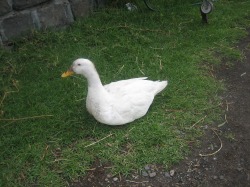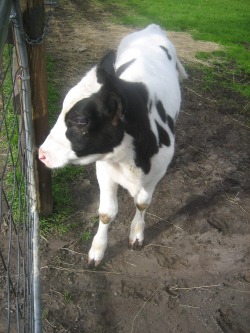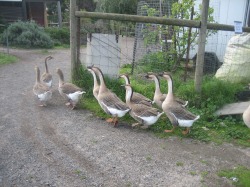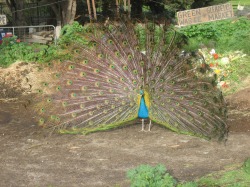|
Location Collingwood Children’s Farm Equipment Zoom H4N Shure Beta 58A Sennheiser MKH60 Jury rigged set-up I got to spend this morning in the studio with my brother Paul. He is over from London to record a new album with some people in Melbourne. It was very interesting listening to the process. He has recently switched his focus to heavy metal music and believes that some of the highest standards in recording are to be found in the genre. I have never really liked metal music, but Paul's approach was very interesting and I learnt some good mastering processes by watching the session. I can’t wait to hear the album when it’s finished. It was a good thing to spend the morning indoors as apparently it poured with rain all morning. By the time we came out at lunchtime it had cleared, and I thought I might actually be able to get some recording done. I walked from the studio in Richmond down to the Collingwood Children’s Farm. The farm is a small area of land in Melbourne’s inner city area on the Yarra River. It’s a great escape from all the noise and overcrowding of the city, they even have a cool outdoor café there. I had visited the farm a few years ago and recorded some ducks and geese. The recordings weren’t great and I think the main reason back then was a lack of patience on my part. Also Spring is a much better time to visit any location for animal recordings. I have been fiddling around with various ways of holding the H4N and a couple of microphones, and I have yet to come up with something I really like. While at the farm I jury rigged a set-up that wasn’t too bad. After walking around for a while holding the mics and H4N separately I realised it really wasn’t practical as the cable movement was being transferred directly to the microphones, so I was getting lots of unwanted noise. I had tried to make a handle with threaded rods protruding that I could screw microphone clips to. I realised that with the Rode blimp cover I already had a handle, and it also had a threaded slot to screw onto a mic stand. So I used a small length of the threaded rod and attached it to the bottom of the pistol grip and then attached a regular mic clip. This allowed me to hold both the blimp array and a second mic. I then used Velcro tape to attach the H4N to the side of the Blimp cover. I did look somewhat like a Buck Rogers blaster, but it removed the nose from the cable movement, and allowed me to carry everything in one had which was much more convenient. I will try to make this set-up more organised, but I think it might work. There were a lot of young animals on the farm, and being mid week, there were not too many people around either. My first success was a single duck. A white Peking duck decided to go for a wander by itself and proudly announce its presence to everyone by quacking. He was not bothered by me following him, so I managed to get some nice clean isolated samples. After this I tried to get the goats to make sound, but they seemed far to happy to play and lie in the sun, and even when they were taken into the stables later to be fed and rested they did so almost completely silently. There was one goat left outside that did make a little noise at being left behind, but overall today was not a day for goats. The pigs were also a little allusive. They had been placed in an isolated pen away from human contact because of the current issues with swine flu. This was done for the sake of the pigs rather than the sake of people. I did get a few sounds from some of the piglets as they tried very persistently to feed from their mother, but they were too far away to get a good clean recording. If I had had the boom pole it might have helped me get the mic closer, but one of the big decisions I have to make each time I go out is what equipment to take and what to leave behind. As I was going to be walking all day today I decided to leave the pole behind. There is never a perfect solution for every contingency unfortunately. There was a single calf in a paddock who initially was very reluctant to make any sound, although he was very enthusiastic about licking the blimp cover. I think the furry material made him very curious. As the day progressed he did call out a few times and I managed to capture a few samples. One of the biggest difficulties for me was the desire to respond to any sound I heard by running over and trying to record it, but animals are very unpredictable, and I decided it was better for me to finish one thing before moving on to the next, otherwise I would spend the entire day running around in circles arriving just as something finished making sounds. So I waited patiently in each area until I got some material, or at least had given it a good amount of time before I moved on. The farm was small enough that I was able to do two or three circuits and make several attempts to capture sounds. Ricky the calf was far noisier as the day progressed than he was earlier on. The sheep were also conveniently noisy when one of the farm staff let them out of their paddock to feed in the lane way. This allowed me to grab some really good recordings, but also allowed me to get near the pigeons in the paddock. I have been wanting for sometime to capture the sound of a flock of pigeons taking off as they have a very distinctive sound of their wings as they take off. The main issue is that most areas where pigeons congregate are in city areas with people and traffic, so it was always going to be noisy. Here I had a nice quiet paddock away from everything with about 30 pigeons all eating. I captured a few minutes of them cooing as they ate, and then simply by taking a few steps forward they all launched into the air giving me a clean recording. Once I stepped back they all returned to eating. I wish all animal recordings were this easy. The recording setup I was using seemed to be working quite well. I had set the input levels to maximize each mic and capture a good range of sounds. The Shure Beta 58A only really worked well at close range, but when I did get the chance to get in close it captured a good clean recording with almost no background sounds. This was really good when all the Chinese Silky chicken roosters decided it was time to crow. There were 4 different male chickens who all very politely took it in turns to call to each other and respond. The result was some beautiful clichéd “cockadoodle do” sounds at various distances. These were captured on all the microphones clearly once I set the levels correctly. A rooster call is actually very loud when you are standing two feet away from the rooster. The geese were less cooperative. They insisted on calling as a choir, and while I managed to get a good recording of a group of geese as they wandered around, it would have been nice to capture one in isolation. The main issue with most animals is that, like humans, they make noise for the sake of communication. Many animals will make little or no noise unless there is another of their kind in range to hear it. Some animals once domesticated will call out to their humans when it is time to be fed or moved, but the very act of isolating an animal can seriously reduce the chances of it making noise. In some cases, like the roosters, the animal’s calls will be in a call and response pattern, and this makes it very easy to record each individual call, but often many animals travel as a group and call out as a group. This means you either need to be very lucky or incredibly patient to capture a single clean call. Today had been a very successful day so far, but just as I was thinking of leaving I had one final surprise. I had noticed there were several peacocks in one of the barns. They had been sitting up in the rafters and looked like they would be there for a while. By the time I was heading out at about 4pm, one of the peacocks had moved out of the barn and was hanging around the composting area. I heard a single cry from him as I was walking up from the sheep paddocks. This is why I often leave me gear in record mode. Since I have started using digital recording devices that use SD flash cards I am able to record several hours of material without stopping. I have found that often if I am in an area with lots of potential sound source it is worth leaving the recorders actively recording at all times, this way I can capture unexpected sounds. The peacock’s first cry was exactly that, and I got a good sample of a call from about 500 meters distance. As I approached the peacock I noticed he was going through the process of trying to impress the peahens in the area. He went through quite a few displays of feathers and little dances and also made a couple more loud calls. I was really happy to record the calls, but when he stared to dance to a female next to him, he did something I was not ever aware peacocks did. As part of his little dance the peacock opens his huge tail feathers, and then every now and then he makes them all shimmer as part of the dance. This is not only interesting to look at but produces a really interesting sound. The best part was that he was completely un-phased by me standing about 3 feet away from him so I managed to capture some really good recordings of this little dance step. I had set out today with the hope of recording a couple of animal sounds, and the expectations that I would probably only get a couple of chickens clucking and maybe a duck. It turned out to be one of the most productive sessions with animals I have ever had. Springtime is definitely the best time to capture animal sounds as they are much more active coming out of winter and going into breeding season. I think I will need to plan to be somewhere interesting each spring where I have access to new animals to record. I will also need to get better at waking up early in the morning as this is usually when many animals are most active.
Website www.farm.org.au/
0 Comments
Leave a Reply. |
AuthorStephan Schütze has been recording sounds for over twenty years. This journal logs his thoughts and experiences Categories
All
Archives
April 2019
|




 RSS Feed
RSS Feed
